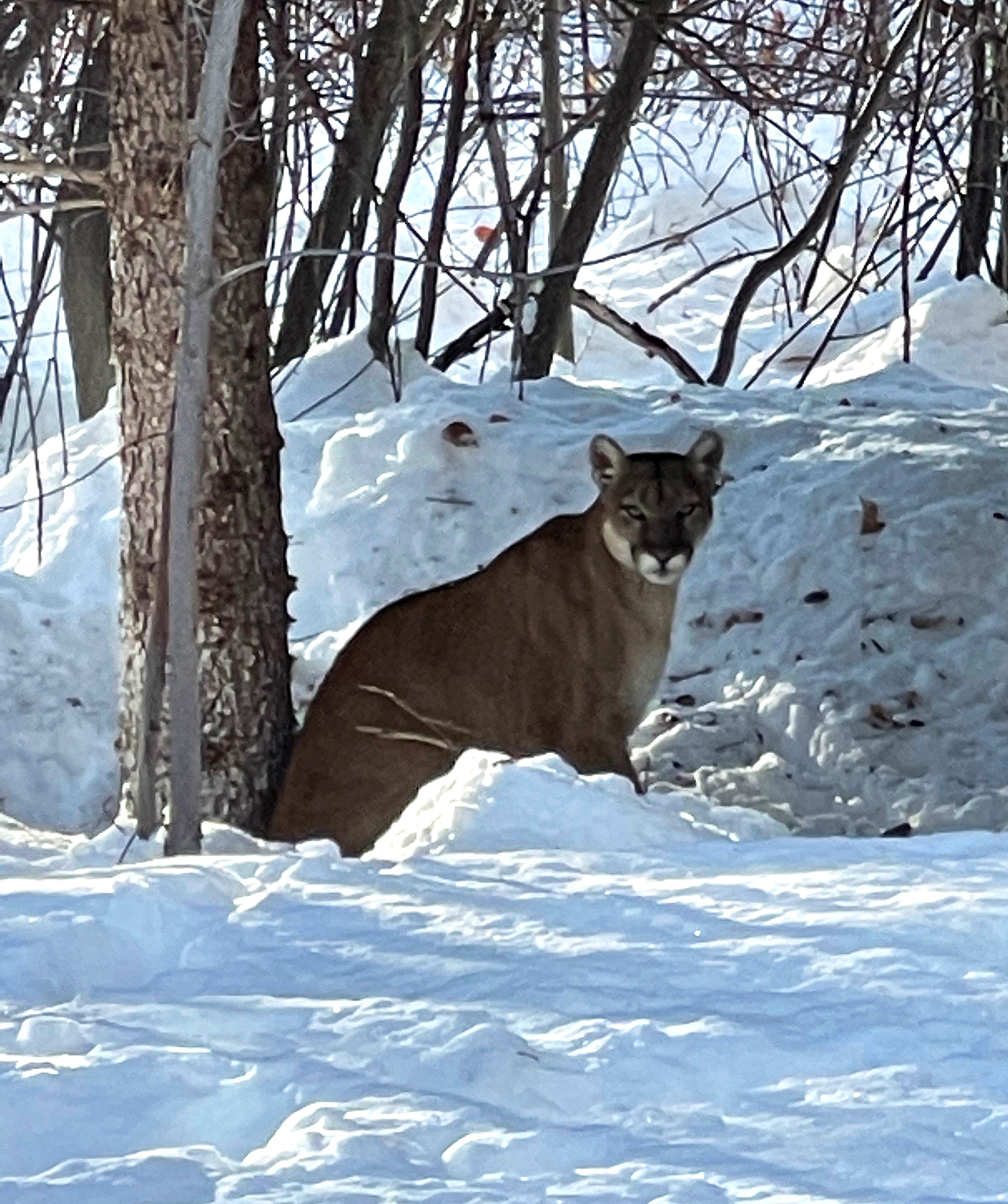Mountain lion calls in the Wood River Valley and near the mountain communities of Pine and Featherville took an immediate uptick after recent snow storms brought feet of snow to area communities. Numerous reports of lion sighting and encounters have been reported to Fish and Game since late January, with most reports coming from neighborhoods north of Hailey. No attacks on people or pets have occurred. During the 2019-2020 winter, several attacks were reported on dogs in the Valley, with three confirmed fatalities to dogs.
Mountain lions can be found throughout Idaho, with healthy populations within the Magic Valley region. Lion observations and incidents do tend to increase during the winter due to increased numbers of deer and elk moving onto their winter range, which are the preferred prey of mountain lions. Many of the lion calls received by Fish and Game over the past few weeks involve deer and elk that have been killed and cached by lions, some very close to neighborhood homes.

Adult female lions sits in the backyard of a home in the Wood River Valley.
“We urge residents to notify our officers if they observe a lion or see tracks around their homes, or if they come across cached prey” stated Regional Conservation Officer Josh Royse, “our goal is to make sure that people and their pets stay safe, and that predators, like mountain lions, continue their natural movements through our communities, which they will do if we do not encourage them to linger in town, or in our back yards.”
Reporting mountain lion sightings and encounters
Residents should immediately report any encounter that results in an attack to the Magic Valley Regional Office at (208) 324-4359 during business hours, 8 a.m. – 5 p.m. Monday – Friday. Reports can also be made to your local law enforcement agency.
Mountain lion sightings and observations should be reported to Fish and Game by calling the Magic Valley Regional Office at (208) 324-4359.
Personal safety
Mountain lions have been in Idaho long before human development began. We hear from residents across the region that they are seeing these secretive cats as they pass through their neighborhoods, with some seeing lions during daylight hours, which is not typical behavior.
Wildlife managers agree that if a person is in close proximity to a lion, meaning they see it, they should:
- NEVER run away from a mountain lion. The lion’s instinct is to chase and catch what they perceive as potential prey.
- NEVER turn your back on a lion. Always face them while making yourself look as large as you can. Yell loudly, but don’t scream. A high pitched scream may sound like a wounded animal.
- SLOWLY back away while maintaining eye contact with the lion.
- Safety equipment you may choose to carry could include bear spray, a noise device, like an air horn, and if you walk in the dark, a very bright flashlight.
- If you are attacked, fight back!
- need all of your senses to detect if wildlife is near. Using a light to help you see is very important, both in your yard, or as you walk in your neighborhood. If you run or bike for personal fitness, use caution when wearing headphones or ear buds which can take away your ability to hear if a lion, or any other wildlife, is giving you signals that you’re too close.
Pet safety
Mountain lions are opportunistic predators, and will often attempt to take prey when it presents itself. A lion may perceive a pet as prey so pet owners are strongly encouraged to follow these safety tips:
- Keep your pets on a leash.
- Watch the pets’ behavior, since they may sense the lion before you can actually see them.
- Do not feed your pet outside, or leave their food dishes outside. Lions will not typically be attracted by the pet food, but the food could attract feral cats or wildlife like raccoons or skunks that could be considered prey by a lion.
- Before letting your pet outside, turn on lights, make noise and look to ensure the yard is clear of wildlife. Do not assume that a privacy fence will keep a mountain lion out of your yard.
- Accompany your pet outside if possible.
Homeowner safety
By nature, mountain lions are shy and will make every effort to avoid contact with humans. Over the last several months it does appear there are some lions that have become accustomed to living near towns and neighborhoods. Homeowners can do several things to make it less likely that a mountain lion would pass through, or live near their homes and neighborhoods. These include:
- When leaving your house, be aware of your surroundings. Look and listen for signs of wildlife.
- Do not feed wildlife! Elk and deer are the preferred prey for mountain lions. Feeding is unnecessary and can concentrate elk and deer herds which can attract predators.
- Strongly encourage your neighbors to not feed elk and deer. To effectively keep predators out of neighborhoods everyone must do their part.
- Do not leave garbage outside and unsecured. Garbage will not typically attract a mountain lion, but it might attract other animals that would be considered prey.
- Ensure that a lion cannot crawl under your deck or into basement window wells which could be a perfect place for a daybed.
- Install motion-sensor lights which may discourage wildlife from staying in your yard. Lights can be directed to minimize light impact on your neighbors.

